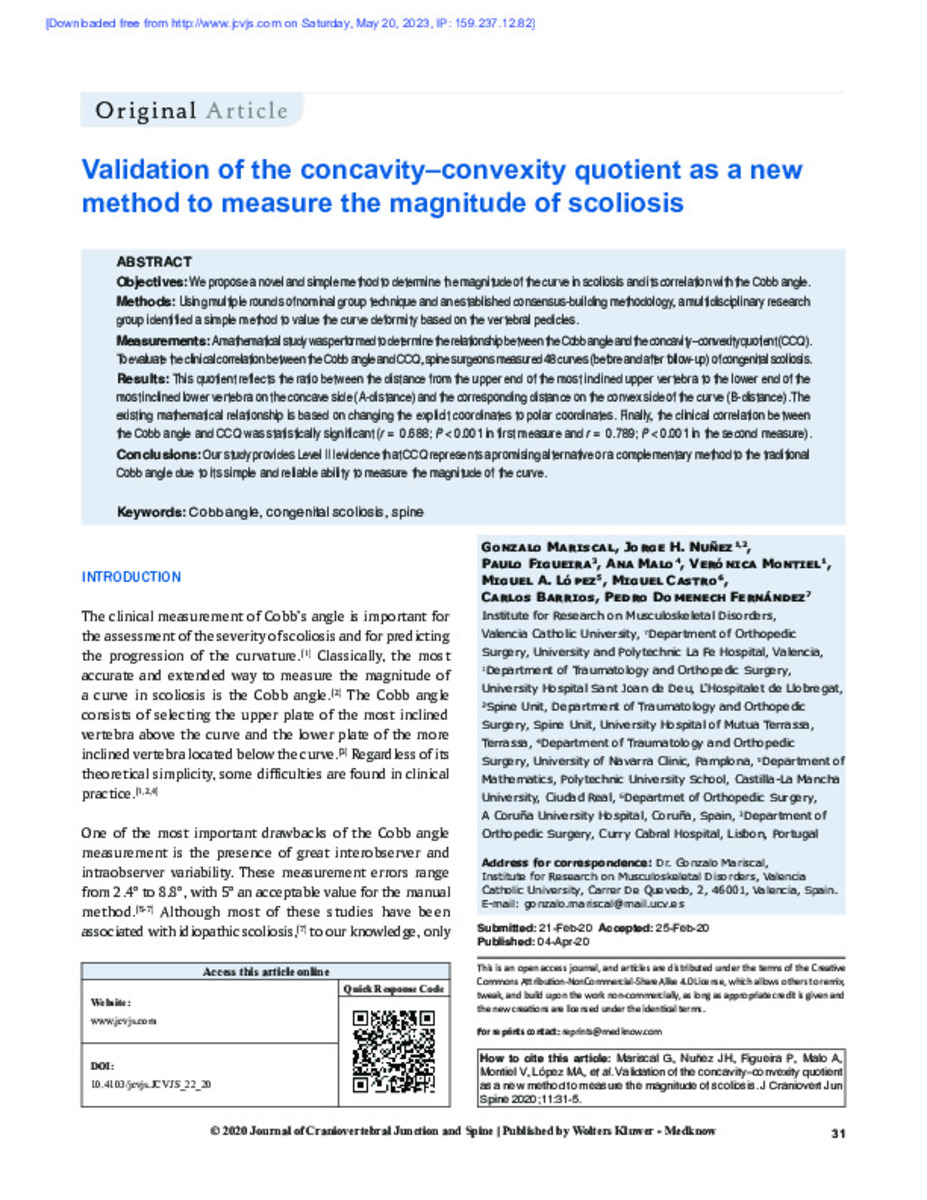Validation of the concavity-convexity quotient as a new method to measure the magnitude of scoliosis.
Keywords:
Cobb angle
Congenital scoliosis
Spine
Publisher:
Wolters Kluwer
Note:
This is an open access journal, and articles are distributed under the terms of the Creative
Commons Attribution‑NonCommercial‑ShareAlike 4.0 License, which allows others to remix,
tweak, and build upon the work non‑commercially, as long as appropriate credit is given and
the new creations are licensed under the identical terms.
Citation:
Mariscal, G. (Gonzalo); Nuñez, J.H. (Jorge H.); Figueira, P. (Paulo); et al. "Validation of the concavity-convexity quotient as a new method to measure the magnitude of scoliosis.". Journal of craniovertebral junction & spine. 11 (1), 2020, 31 - 35
Statistics and impact
0 citas en

0 citas en

Items in Dadun are protected by copyright, with all rights reserved, unless otherwise indicated.








